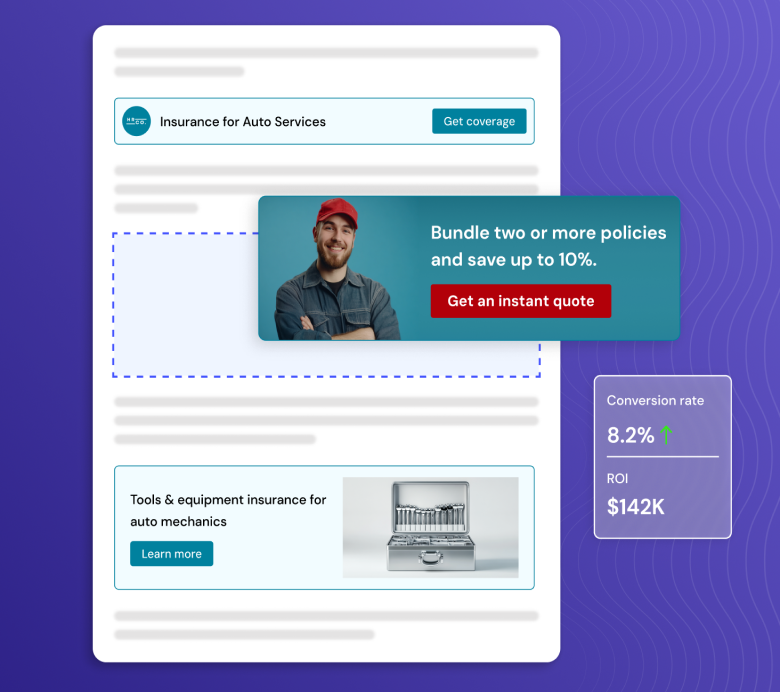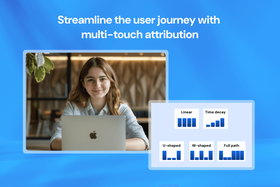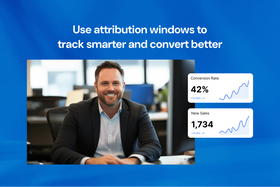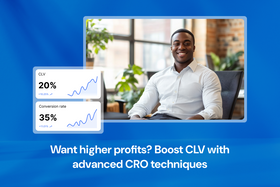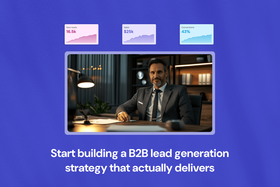9 ways to reduce customer acquisition costs using SEO, CRO & beyond
Stop overspending on customer acquisition—start working smarter with these proven strategies to lower CAC.
Updated May 29, 2025
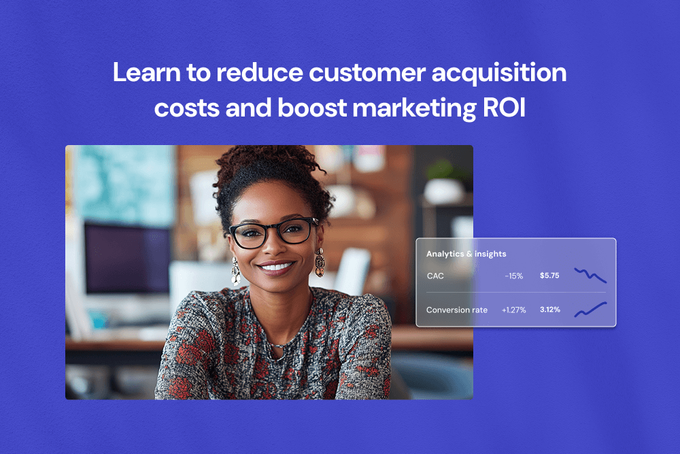
Struggling with sky-high marketing expenses that eat into your profits? You're not alone. As competition intensifies across digital channels, the cost of acquiring new customers continues to rise—but your budget doesn't have to suffer.
By understanding your customer acquisition cost and implementing targeted strategies to reduce it, you can dramatically improve your marketing ROI without sacrificing growth.
This guide walks you through actionable approaches to lowering your CAC while maintaining—or even increasing—your customer base.
Key takeaways
- Calculate your CAC by dividing total acquisition costs by new customers gained during the same period.
- Optimize conversion rates through better UX, targeted CTAs, and A/B testing to get more customers from existing traffic.
- Implement referral programs to transform satisfied customers into cost-effective acquisition channels.
- Balance paid and organic acquisition strategies for sustainable, cost-efficient growth.
What is customer acquisition cost?
Customer acquisition cost (CAC) is the total amount a business spends to convert a prospect into a paying customer. It includes all marketing and sales expenses, such as advertising spend, team salaries, content creation costs, software tools, and related overhead.
Understanding your CAC is crucial because it directly impacts your bottom line. When acquisition costs exceed customer lifetime value, growth becomes unsustainable.
By tracking CAC, you can identify inefficient spending, optimize marketing channels, and make data-driven decisions that support profitable scaling.
» Automate conversion optimization and slash CAC with Entail CRO.
How to calculate CAC
The basic formula for calculating CAC is straightforward:
CAC = Total sales & marketing costs ÷ Number of new customers acquired
Let's look at this in practice.
If you spent $15,000 on marketing and acquired 500 new customers, your CAC would be $30 per customer.
For a more accurate picture, your CAC calculation should include:
- Advertising costs (PPC, social media, display)
- Content marketing expenses
- Marketing and sales team salaries
- Technology costs (CRM, analytics tools)
- Creative expenses (design, copywriting)
- Overhead allocations
To gain deeper insights, calculate CAC for different timeframes (monthly, quarterly) and break it down by individual marketing channels to identify your most cost-effective acquisition sources.
» Need help lowering your CAC? Chat to an expert today.
9 proven strategies to reduce customer acquisition costs
1. Optimize your conversion rate
One of the most direct ways to reduce CAC is to convert more of your existing website visitors. If you double your conversion rate, you effectively cut your acquisition cost in half without spending an additional dollar on traffic.
As SEO and CRO expert Elisa Montanari explains, “SEO drives users to the website, and CRO converts them into high-quality leads. One way to increase high-quality leads without increasing acquisition costs is to increase your conversion rate.”
That starts with creating a website experience that feels frictionless and trustworthy. Conversion optimization isn’t just about visual tweaks—it’s about aligning your UX, content, and messaging with what your ideal customers actually need.
How to implement this strategy:
- Simplify your forms by removing unnecessary fields
- Create clear, compelling calls-to-action
- Improve page load speed (every second delay reduces conversions by 7%)
- Ensure your site is optimized for mobile
- Implement exit-intent popups to capture visitors who click off your site
Tools to consider: Entail CRO, Google Analytics, Hotjar
READ MORE: 13 top CRO tools to supercharge conversions
By identifying and fixing conversion bottlenecks, you make every marketing dollar work harder. For instance, improving your landing page conversion rate from 2% to 4% immediately halves the cost of acquiring each customer through that page.
But optimizing your site starts long before a user hits the CTA button. It requires a deep understanding of who your users are and what drives them—which brings us to the next strategy.
2. Get to know your users inside and out
To lower CAC in a meaningful way, you need more than performance tweaks—you need to understand your users better than anyone else.
Montanari emphasizes, “CRO means improving your website, UX, user journey, content, and messaging to a point that your ideal customers feel excited to use your services or purchase your products and feel confident putting their trust in your brand.”
That level of trust has to be earned through research. User interviews, in particular, can reveal insights that help you fine-tune messaging, test new ideas early, and better understand your brand perception.
Some key questions user research can help answer include:
- What problems are your users trying to solve?
- Where do they go for information, and what do they trust?
- What made them remember or choose your brand?
- How does your content compare to others in the SERP?
- Do they view your site as credible and helpful?
These insights don’t just fuel better CRO—they also improve your SEO. As Montanari points out, “Google relies on user signals to understand if users find the information they are looking for… and when they do, it rewards such websites.” In other words, what’s good for users is good for rankings—and good for conversion.
Establishing a continuous feedback loop with your audience helps you adapt your site, content, and strategy over time, so you can attract and convert more of the right people without increasing your budget.
3. Focus on customer retention
While not directly reducing acquisition costs, improving retention decreases the number of new customers you need to acquire to maintain growth. According to Harvard Business Review, increasing customer retention by just 5% can boost profits by 25-95%.
How to implement this strategy:
- Create a comprehensive onboarding process
- Develop loyalty programs that incentivize repeat purchases
- Establish regular communication channels for feedback
- Address issues quickly to prevent churn
- Focus on delivering exceptional customer service
Metrics to track: Customer lifetime value, churn rate, retention rate
Remember that acquiring a new customer costs 5-25 times more than retaining an existing one. By shifting some of your focus from acquisition to retention, you reduce the pressure on your acquisition budget while increasing customer lifetime value.
4. Implement referral programs
Referred customers typically have a 16% higher lifetime value and a 37% higher retention rate than non-referred customers. Plus, they often come at a significantly lower acquisition cost.
How to implement this strategy:
- Offer meaningful incentives that benefit both the referrer and the new customer
- Make the referral process simple with clear instructions
- Track referral sources to identify your most valuable advocates
- Personalize thank-you messages to strengthen customer relationships
- Test different reward structures to find what drives high-quality referrals
A well-designed referral program turns your satisfied customers into an extension of your marketing team, bringing in pre-qualified leads at a fraction of traditional acquisition costs.
For example, Dropbox achieved an astonishing 3900% user growth in just 15 months. They did this through a referral strategy that seamlessly integrated with their product experience.
5. Leverage SEO for organic acquisition
SEO provides one of the highest ROIs of any marketing channel when measured over time. While it requires patience and consistent effort, organic traffic has no per-click costs once you've established rankings.
How to implement this strategy:
- Target high-intent keywords that indicate purchase readiness
- Create valuable content that addresses user search intent
- Optimize technical aspects of your site (speed, mobile-friendliness)
- Build quality backlinks from authoritative sources
- Implement schema markup to enhance SERP visibility
Tools to consider: Ahrefs, SEMrush, Google Search Console
Unlike paid ads that stop delivering traffic the moment you pause spending, SEO creates lasting assets. A single well-optimized blog post can drive traffic and conversions for years, which reduces your average acquisition cost over time.
» Get more customers through search with SEO customer acquisition.
6. Balance paid and organic acquisition
Rather than viewing paid and organic methods as competing approaches, the most effective strategy combines both. This creates multiple touchpoints throughout the user journey while providing stability through market changes.
How to implement this strategy:
- Use paid advertising to amplify your highest-performing organic content
- Apply insights from organic content performance to improve paid campaigns
- Create multi-channel attribution models to understand how channels work together
- Develop retargeting strategies specifically for organic visitors
- Coordinate content calendars across paid and organic efforts
Metrics to track: Channel-specific CAC, assisted conversions, multi-touch attributions
This balanced approach allows you to capitalize on the immediate results of paid acquisition while simultaneously building the long-term value of organic channels. This ultimately creates a more sustainable and cost-effective acquisition system.
» Learn why combining paid and organic acquisition creates stronger, more sustainable growth.
7. Optimize your marketing funnel
Many businesses lose potential customers due to inefficiencies in their content marketing funnel. By identifying and eliminating bottlenecks, you can significantly reduce acquisition costs without increasing your budget.
How to implement this strategy:
- Map out your entire customer journey from awareness to purchase
- Use analytics to identify where prospects drop off
- Implement lead-nurturing sequences for prospects who aren't ready to buy
- Segment your audience based on behavior and preferences
- Create targeted content for each stage of the funnel
Tools to consider: GA4, email automation platforms, CRM systems
A well-optimized funnel ensures that more of your marketing spend translates into actual customers. For example, nurturing leads with targeted content can increase conversion rates by 50% while decreasing acquisition costs by 33%.
8. Test and refine your value proposition
Sometimes, high acquisition costs stem from an unclear or unconvincing value proposition. Continuous testing can help you find messaging that resonates better with your target audience.
How to implement this strategy:
- A/B test different headlines, CTAs, and value statements
- Gather customer feedback to understand what truly matters to them
- Analyze competitors' positioning to find opportunities to stand out
- Refine messaging to focus on specific pain points and solutions
- Test pricing structures and offers to find optimal conversion points
Metrics to track: Conversion rates, click-through rates, engagement metrics
9. Leverage user-generated content and social proof
User-generated content (UGC) and social proof build trust while reducing content creation costs.
How to implement this strategy:
- Encourage customers to share experiences on social media
- Highlight customer testimonials and case studies prominently
- Feature user-generated content in marketing materials
- Create a community where customers can interact with each other
- Display trust signals like reviews, ratings, and endorsements
Tools to consider: Review platforms, social listening tools, UGC platforms
By letting satisfied customers tell your story, you reduce content creation costs and create more authentic marketing that converts better.
How to find the optimal CAC for your business
While reducing CAC is important, the goal isn't always to achieve the lowest possible figure. Instead, focus on finding the optimal balance between acquisition cost and customer value.
The ideal CAC varies based on:
- Your industry and competition
- Customer lifetime value
- Growth stage of your business
- Profit margins
- Funding situation
A sustainable benchmark is maintaining a customer lifetime value to CAC ratio of at least 3:1. This means each customer brings in three times more value than it costs to acquire them.
Transform your acquisition strategy today
Reducing customer acquisition costs isn't about cutting corners—it's about creating more efficient pathways to sustainable growth. By implementing these strategies and continuously measuring their impact, you can build an acquisition engine that delivers better results without breaking the bank.
Start by identifying your highest-cost acquisition channels, implement one or two strategies from this guide, and measure the results. With consistent effort and data-driven decisions, you can dramatically improve your marketing efficiency.
» Ready to reduce CAC and increase conversions? Check out Entail CRO.
